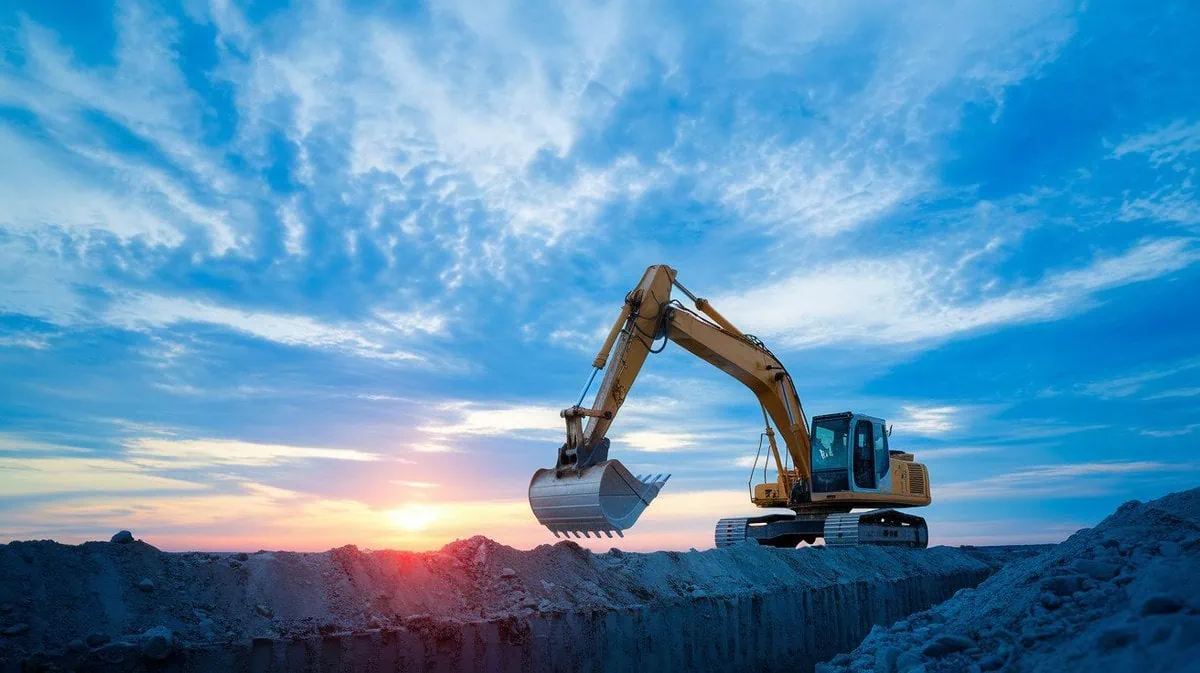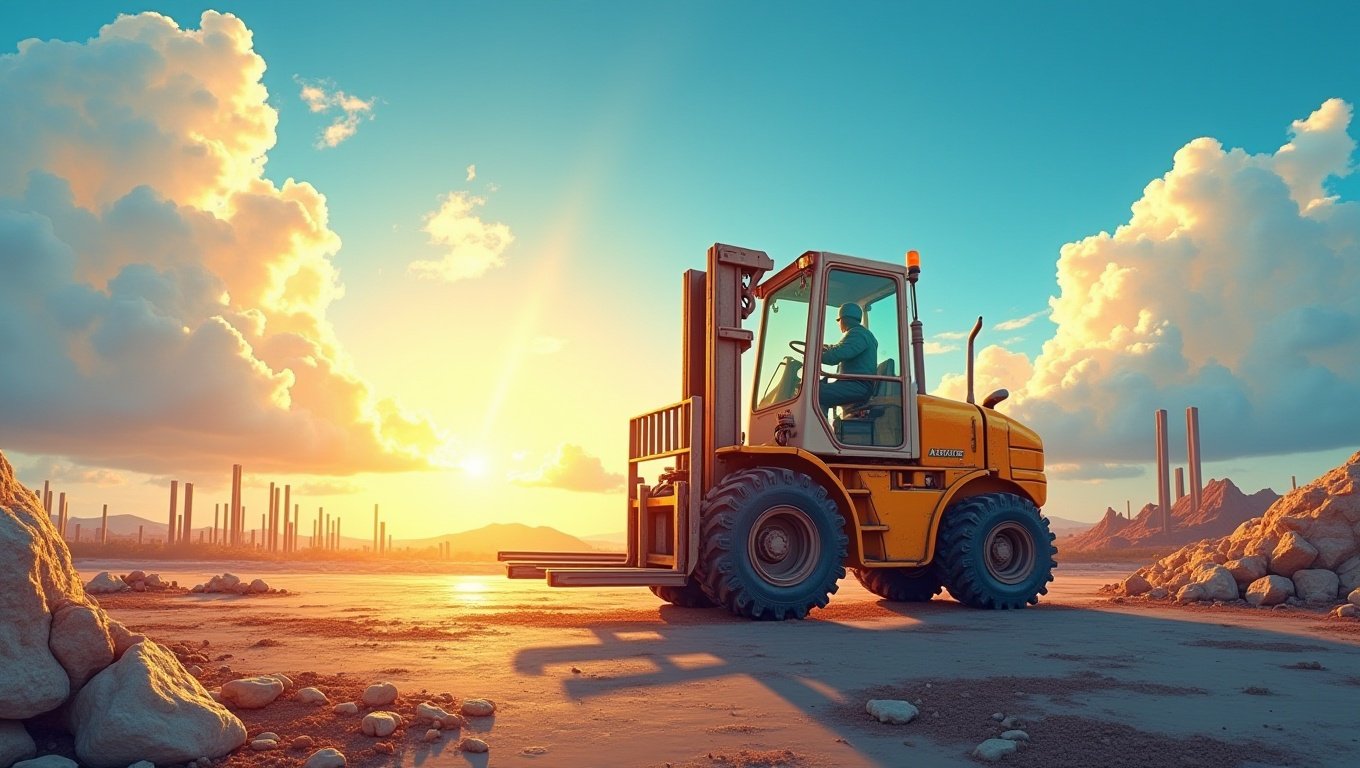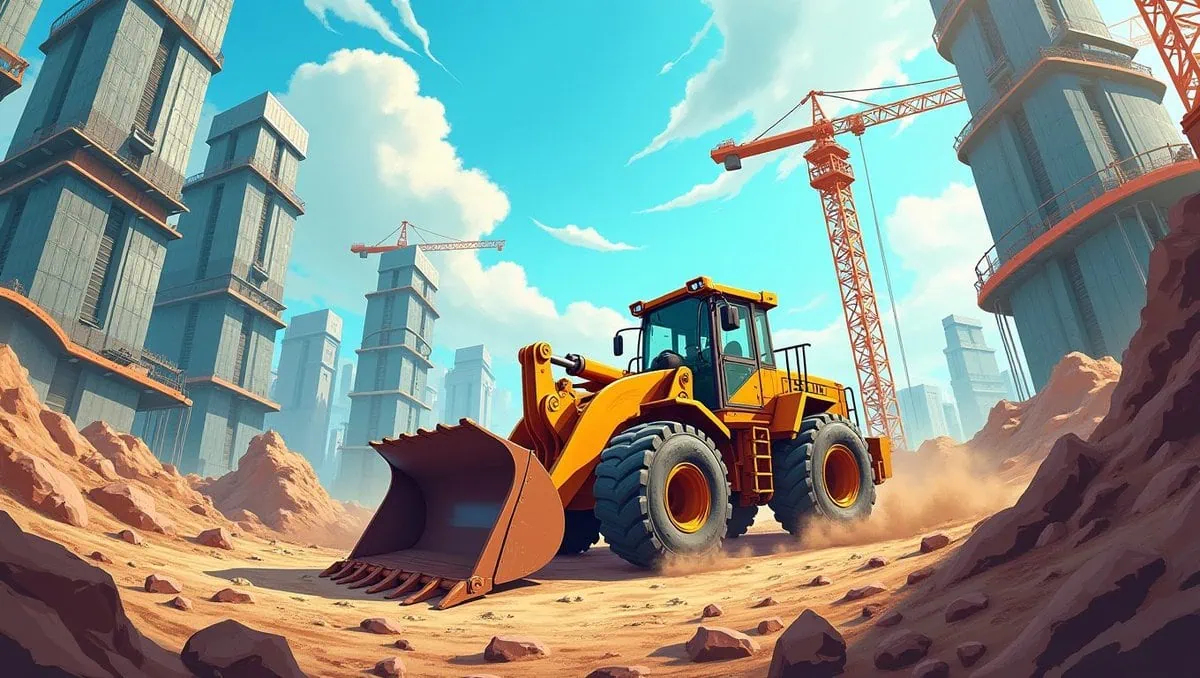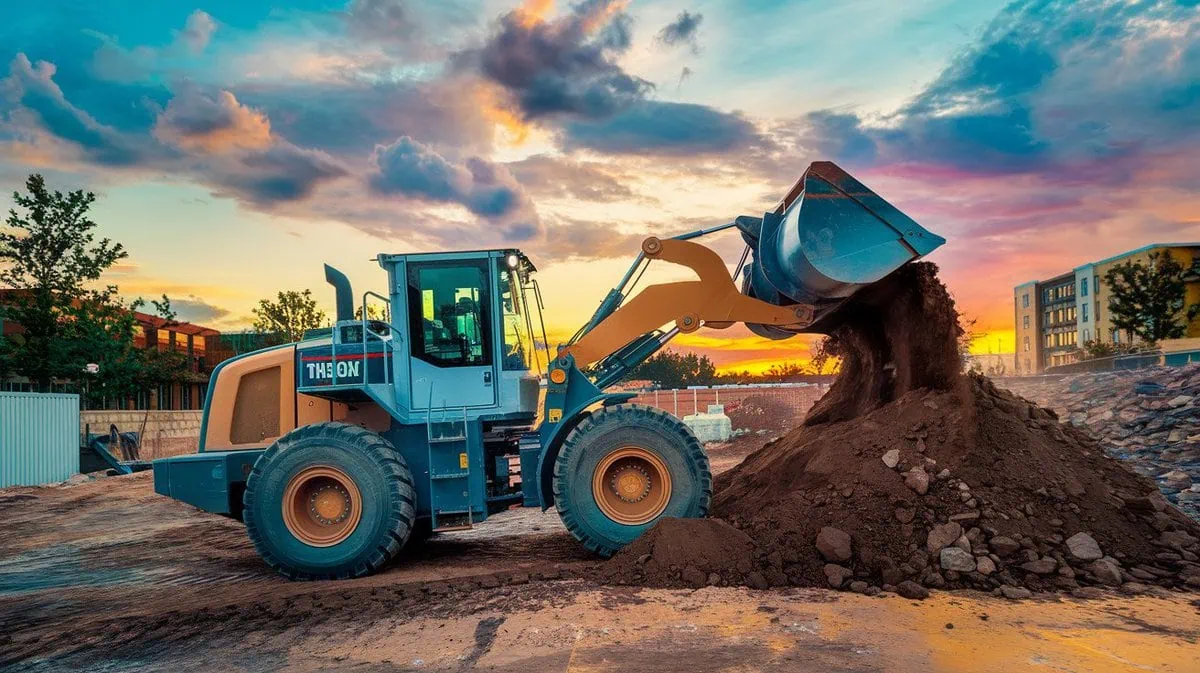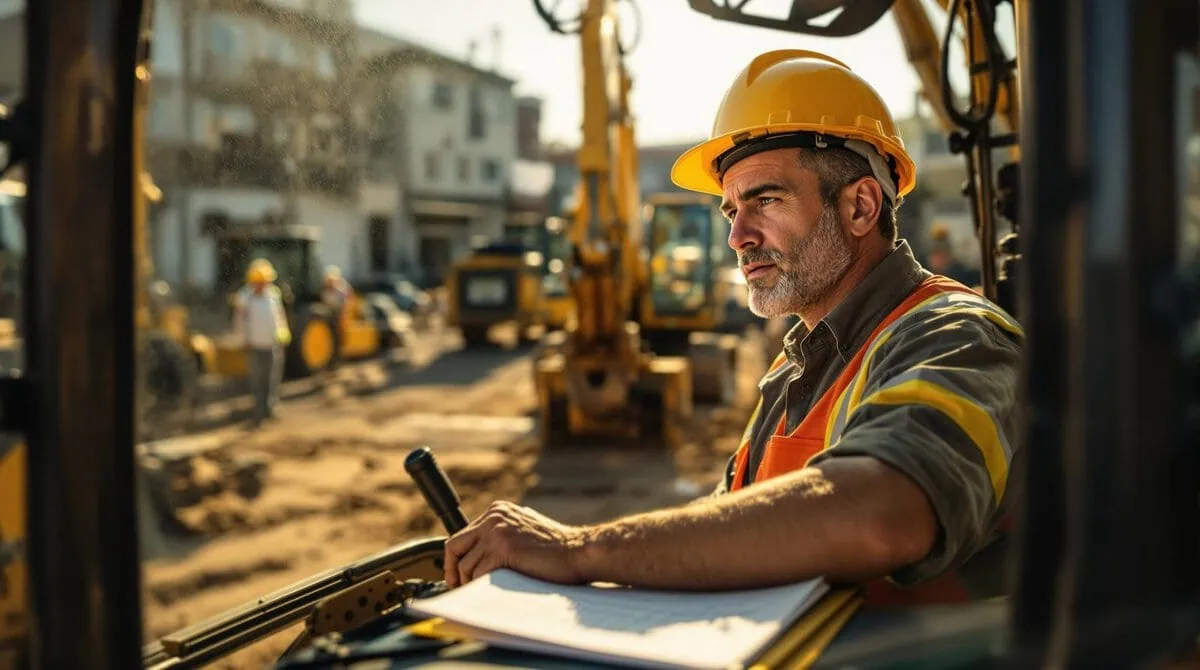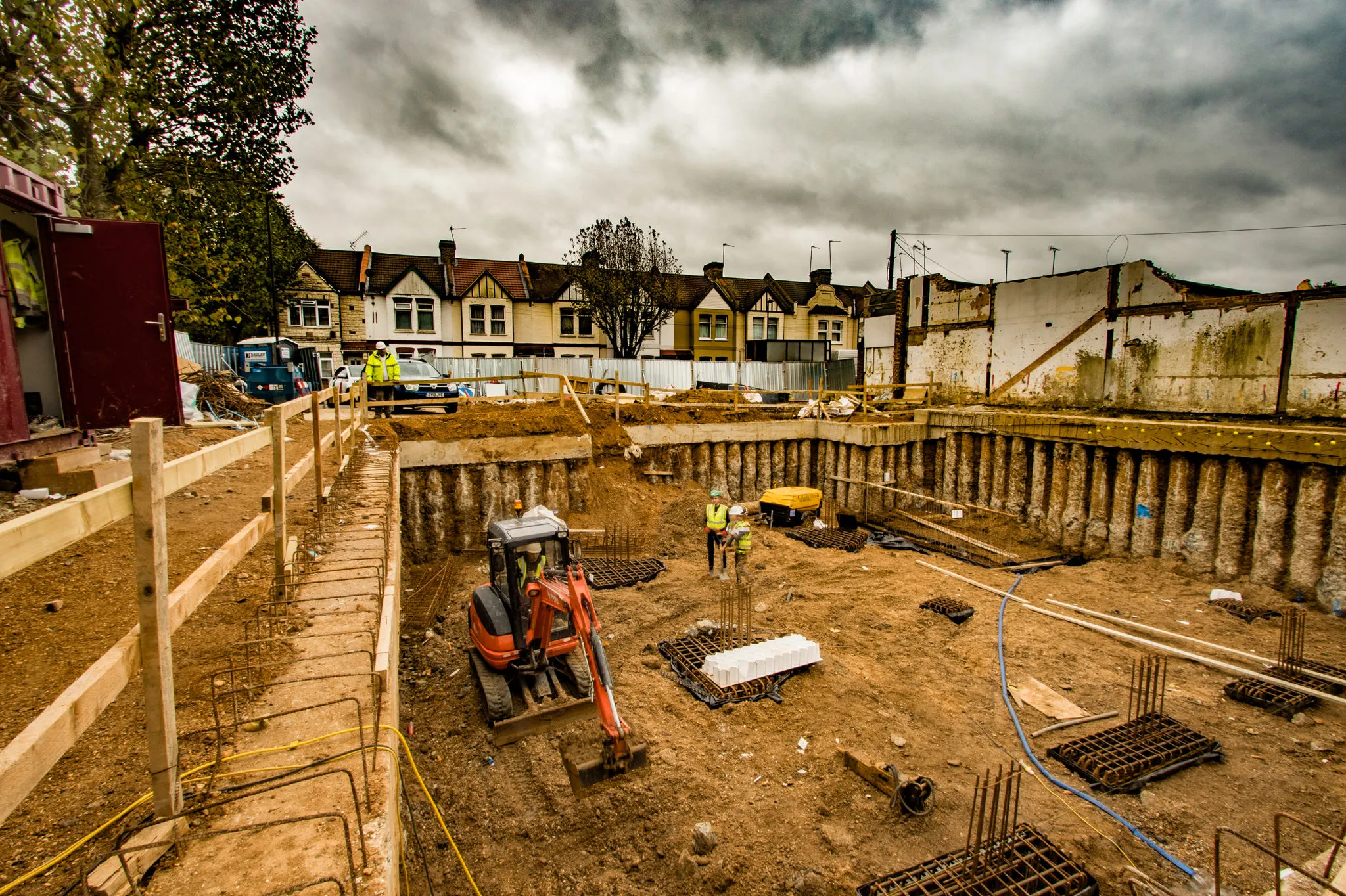An экскаватор-амфибия is a valuable piece of heavy equipment, especially when trying to work in wetland areas where you come across soft sediments, rivers, or flood-prone areas. It’s very inconvenient, time-consuming, and costly when you have to stop a project because the machine you’re using is stuck in the muck. You want to be sure you get the right machine for your project.
To select the best экскаватор-амфибия, it’s important to consider the project’s specific requirements, terrain type, load capacity, and machine versatility. Evaluating these factors will help you make an informed choice that will maximize project productivity and performance.
In this guide, I’ll explain the key factors to consider when looking for an экскаватор-амфибия for your project and how to evaluate your needs appropriately.
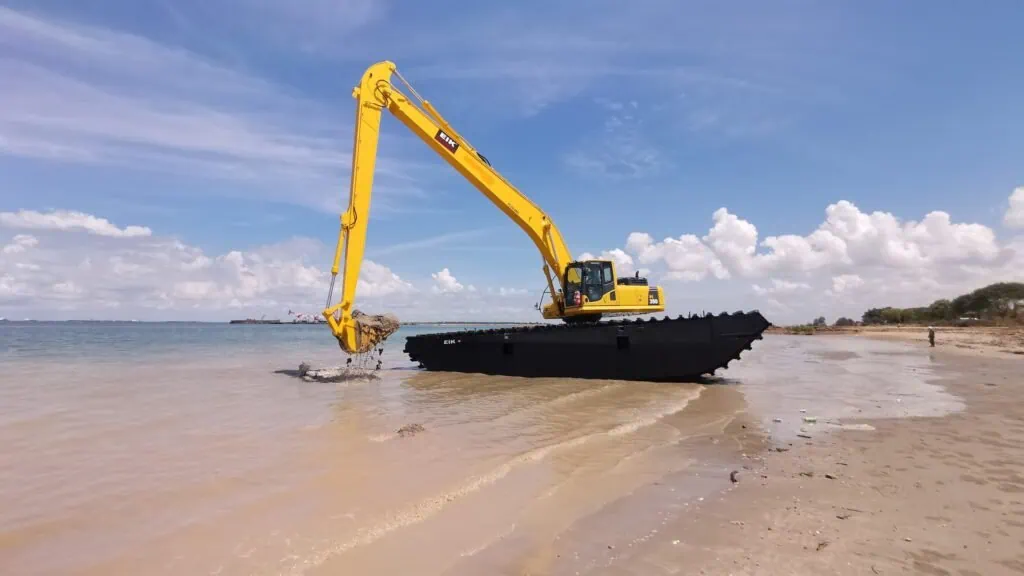
1,What Is an Amphibious Excavator?
An экскаватор-амфибия is a specialized piece of equipment built specifically to operate efficiently on both land and in water, making it ideal for those types of projects common in wetlands, floodplains, and shallow waters.
Amphibious excavators are equipped with pontoons or flotation devices that allow them to navigate across wetland and waterlogged areas where conventional excavators would be unable to function. These machines offer unparalleled versatility for construction, dredging, and environmental restoration projects.
An экскаватор-амфибия is designed to have high mobility on both land and in water. This feature makes it valuable in areas like marshlands, floodplains, and other soft, wet terrains where you can get stuck with a traditional excavator. People usually refer to these as swamp vehicles because of their ability to work in these swampy, saturated water areas. They have specially designed pontoons to provide flotation, preventing the excavator from getting bogged down in the muck and water. Because they can work in places impossible to reach with regular equipment, they have a significant edge on projects that require both land and water-based excavation.
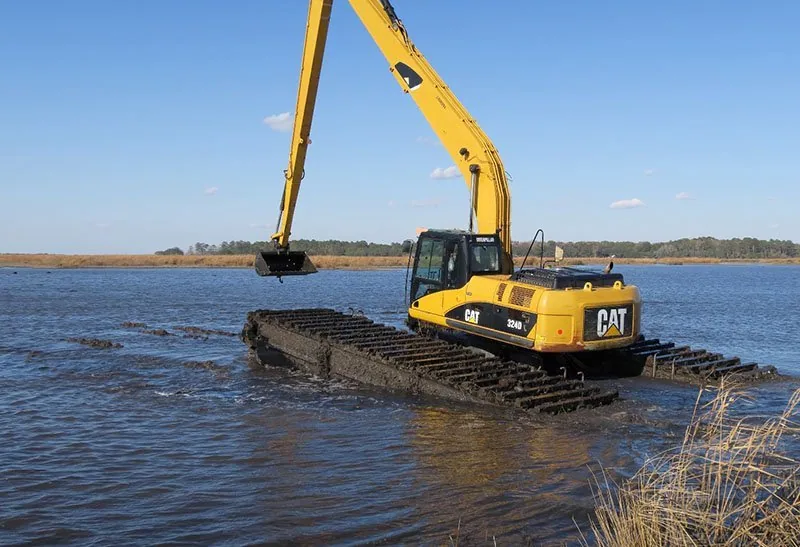
2,Key Features to Consider When Choosing an Amphibious Excavator
When looking for the right экскаватор-амфибия, you must consider several key factors to ensure the machine will meet the requirements of your project. Flotation capacity, how well the unit maneuvers, power, and its overall stability play important roles in its operation.
Key features to look for include the size and design of the pontoons, the type of drive system, and the machine’s weight distribution. These elements influence the excavator’s stability, mobility, and ability to operate efficiently in challenging environments.
The flotation system is one of the most important features on an экскаватор-амфибия. The pontoons need to be big enough to provide enough buoyancy to keep the machine floating while working in water-saturated terrains. The drive system is another critical factor. Amphibious excavators come with either rubber tracks or hydrostatic drive systems. Both provide great ability to move on both land and in water. Rubber tracks are particularly useful in very soft, muddy areas, while a hydrostatic system provides better steering and control in water.
You want to pay attention to the weight distribution on the machine. An amphibious machine that is well balanced can move on soft, unstable ground without tipping over. For example, CAT Amphibious excavators are well known for their durability and advanced design features. They have big, heavy-duty pontoons and an excellent track or drive system making them perfect for everything from swamps to shallow water. Some machines even come with longer arms to accomplish tasks like dredging and underwater excavating.
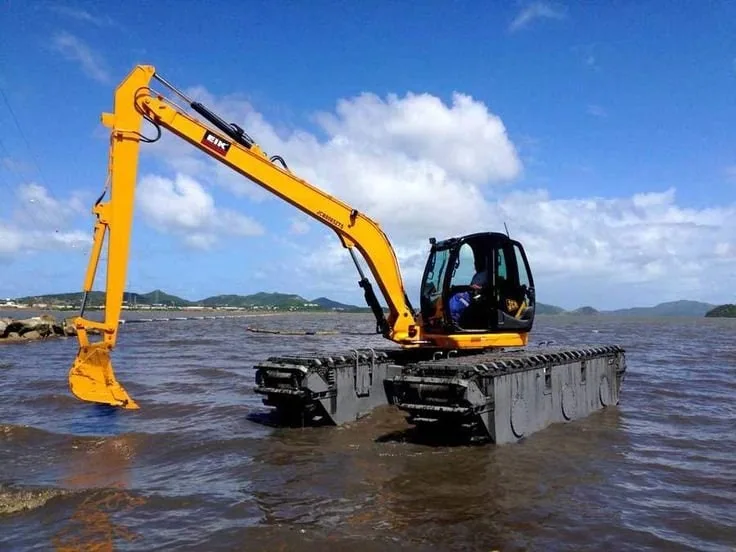
3,What Are the Advantages of Using an Amphibious Excavator?
Projects that can benefit from the use of an экскаватор-амфибия are those in regions that make using standard equipment impossible. Amphibious excavators make it possible to work in very soft terrain and leave a minimal environmental footprint while performing a wide array of excavation and dredging tasks.
The main advantages of using an экскаватор-амфибия include increased efficiency, reduced environmental damage, and improved access to challenging terrains such as wetlands and shallow bodies of water. They are ideal for flood control, habitat restoration, and large-scale dredging operations.
One primary advantage of an экскаватор-амфибия is the ability to access and work in places where traditional heavy equipment can’t go. One type of project is in wetlands, marshes, and floodplains where the ground is waterlogged. Because the equipment doesn’t weigh as much and has a flotation system, it can travel across these sensitive terrains without doing a lot of damage.
A common use of these machines is in environmental projects. Amphibious excavators frequently work on habitat restoration projects, and in areas where flood control is important and less disturbance could prevent or solve the problem. They provide a way to do less ground disturbance and provide less erosion created by standard heavy equipment, so they solve the problem and provide a sustainable solution. Their versatility to operate either on land or in water makes them the perfect piece of equipment to do jobs such as dredging mud from rivers, cleaning up storm debris, and restoring marshland.
For example, an amphibious dredge is used to move sand and mud from a body of water, which is much better than disturbing the delicate ecosystem with heavy equipment.
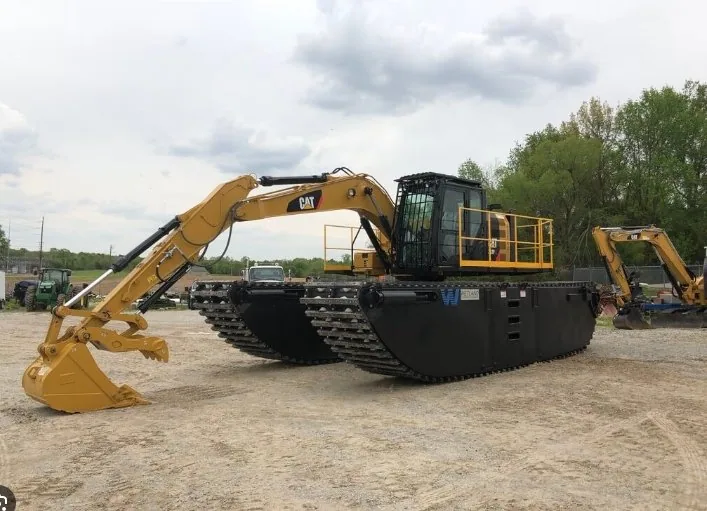
4,How to Evaluate the Terrain and Project Requirements for Your Excavator
You must understand the terrain conditions and what you intend to use the machine for before getting an экскаватор-амфибия. You want a machine designed for the environmental conditions where you will use it.
Evaluate terrain factors such as the depth of water, soil type, and the presence of obstacles. The more detailed your understanding of the site, the better you can choose the appropriate excavator model and configuration.
If you are working in soft, muddy areas, a lighter экскаватор-амфибия is better because it won’t sink in the ground. With their weight spread out over a vast area, it will drive on the ground. If you need more reach to get further out into the water, you need an amphibious excavator with longer reach and extendable pontoons or special attachments.
If you’re going to be doing work in a river or a lake and need to do any digging or dredging, it might be better to use an amphibious dredge. They’re designed with long arms, and they have a powerful vacuum system designed to suck mud and debris out of the water. You also need to decide if you’re going to need other attachments, such as a hydraulic hammer or a bucket for specific types of work. Do you have such heavy-duty requirements that you believe a Caterpillar amphibious excavator would be the best fit for completing these demanding tasks?
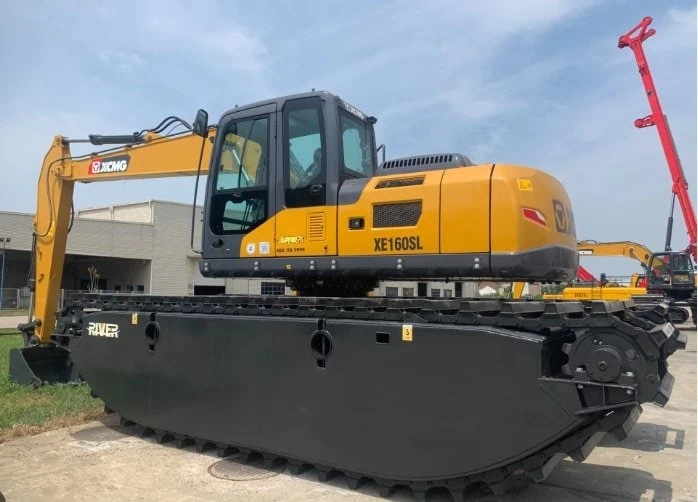
5,How Much Does an Amphibious Excavator Cost?
These machines can range in price from very cheap to very expensive, depending on their size, brand, and which special features they have. Understanding this depends on how to plan your budget.
On average, the cost of an экскаватор-амфибия ranges from $100,000 for smaller models to over $500,000 for larger, more specialized machines. The final price depends on the features, size, and brand reputation.
A small, little экскаватор-амфибия that sits on a simple pontoon might cost less than you think. A big, heavy-duty model designed to do massive jobs and dig out in the middle of a lake will set you back a bit. Also, one that has a longer reach for underwater work or a specially designed bucket or attachment for dredging will cost more as well. CAT amphibious excavators are great machines. They’re robust, they have lots of good stuff on them, and they come with a price tag to match.
What most people don’t remember is that the cost of the machine is only a fraction of the total investment. You also have maintenance and on-going operating costs like fuel and labor. Maintenance costs tend to run the gamut depending on the brand and model. Just remember, regularly check the pontoons, hydraulics, and drives. That maintenance will make your экскаватор-амфибия last forever.
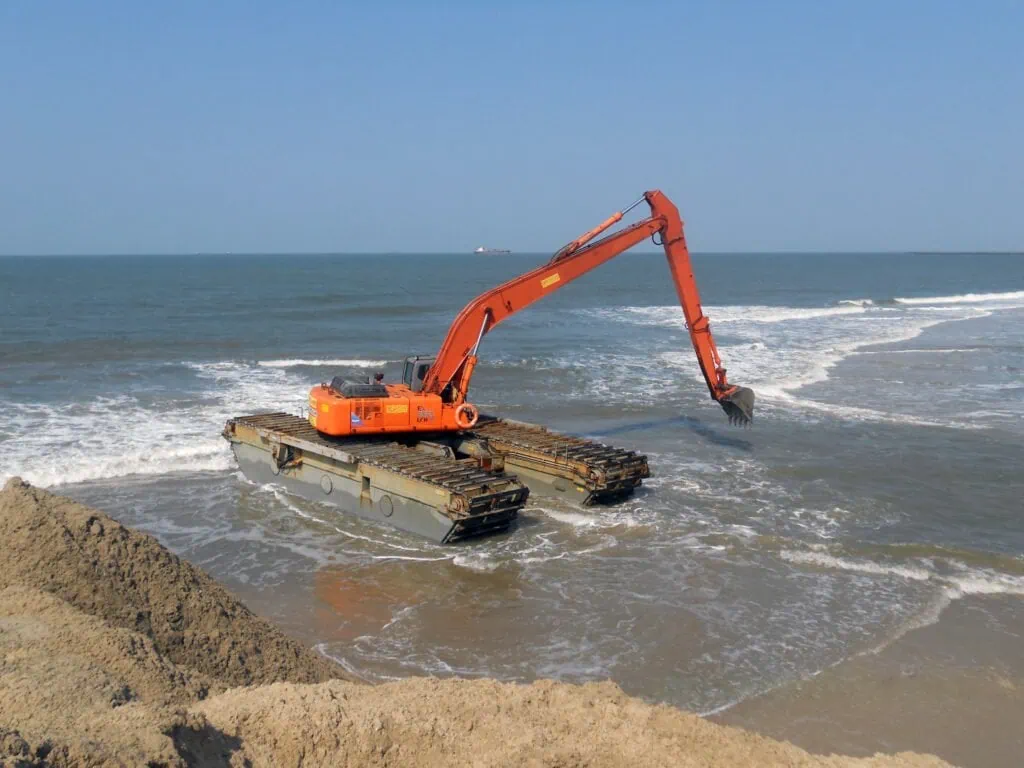
6,How to Maintain an Amphibious Excavator?
The key to using your amphibious machine for a long time is proper maintenance. Check the machine periodically and service it to avoid a big, expensive breakdown.
Key maintenance tasks include inspecting the pontoons for leaks, checking the drive system for wear, and maintaining the hydraulic system. Keeping these components in top condition ensures smooth operation in both wet and dry conditions.
Your экскаватор-амфибия will require routine maintenance to be sure all the systems are a go, especially the flotation system. Check the pontoons regularly for leaks and damage. Any water inside will decrease your buoyancy and probably knock you over. You also want to check your drive system, whether it’s hydraulic or rubber track-based. Especially if you’ve been working long hours on soft or wet soil.
Don’t forget your hydraulic system. All your controls to run your arm, bucket, and attachments are hydraulically powered. Check your hydraulic oil level and quality. As long as you keep everything maintained, you will save yourself money and keep your machine running to make you money for a very long time. Of course, as with any expensive equipment, routine maintenance is vital, especially if you have the machine working hard in a harsh environment like it would for swamp buggies or an amphibious dredge.
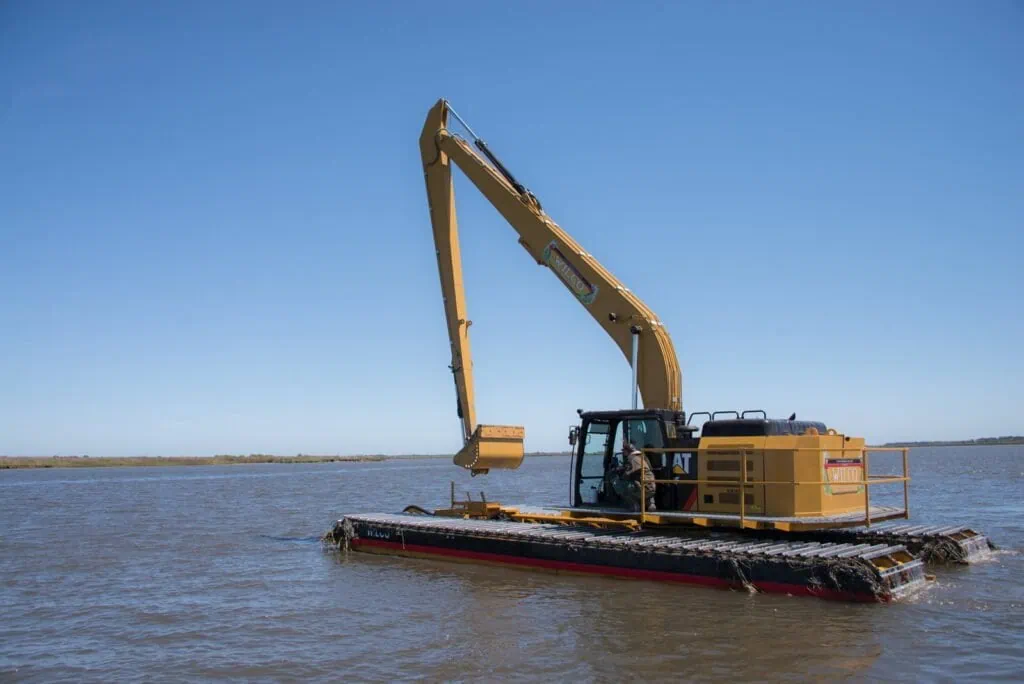
7,Which Excavator Is Suitable for Digging Underwater?
Certain amphibious excavators or amphibious dredges are specially designed for underwater excavation with long arms, submersible features, and equipment specifically for underwater excavating.
Underwater excavators are designed to perform deep excavation tasks, such as trenching, material removal, and underwater construction. Models with extended arms and robust pontoons are ideal for these tasks.
If you’re looking at an экскаватор-амфибия to work underwater, which is way out of the water, find one with an arm that extends way out. Many times, these machines also come equipped with special claws or buckets to dig down into the water and pull up whatever material they want from the bottom of a river, lake, or ocean.
It helps if you have a Caterpillar amphibious excavator. Using their long arm and great dredging capabilities come in handy for dealing with these issues. Some models even offer more support or additional buoyancy control so that you can be more stable working in the deep water. Sophisticated hydraulics are another reason the Caterpillar folks love their equipment. These hydraulics help let you run your machine, even under the water, to make sure you can continue to work.
8,How Deep Can an Excavator Go in Water?
A typical экскаватор-амфибия like this can reach down to a depth of 14ft but there are some excavators that can go to a depth of 50ft. So, what you see on the spec sheet of the machine you buy will be the variables that will typically dictate the depth.
Typical amphibious excavators can operate in water depths of up to 30 feet, though this can vary based on the machine’s specifications and attachments.
The other thing to consider is the reach of the arm. How deep can the reacher go down? Most amphibious excavators are designed to work in shallow rivers. However, there are a few designs out there that, along with booms, can potentially reach down into the water 30 feet or more. These are fabulous pieces of equipment for dredging harbors, dredging rivers, and even working on underwater construction projects.
So, you have to evaluate the depth you need the excavator to be able to work. If you are working shallow swampy areas, you can probably get by with most swamp buggies. If you need to be able to work underwater in a more severe environment, you are going to need a specialized amphibious dredge, or an amphibious excavator like the people at Caterpillar.
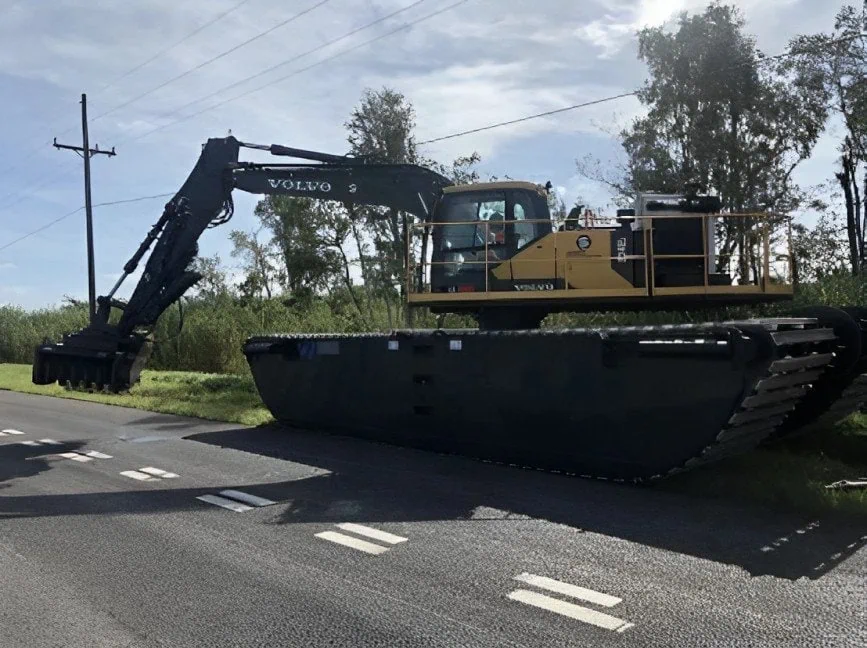
9,How to Choose Between Different Brands of Amphibious Excavators?
Selecting the right brand of экскаватор-амфибия is equally as important as the technical specifications. Different brands have different features, reliability, and pricing that can make a big difference in the performance and results you get from your amphibious excavator.
Top brands like Гусеница, Комацу, и Число each bring their own strengths to the table. Whether you prioritize reliability, cost-effectiveness, or cutting-edge technology, each brand offers specific advantages for your project needs.
Most of the really well-known brands have found a way to position themselves into the market. You will find all kinds of Caterpillar amphibious excavators out there because we all recognize the Caterpillar name. Caterpillar is known not only for its brand and the durability of its machines but the advances in technology that the Caterpillar name guarantees. For example, Caterpillar is to make comparatively robust machines that have extremely powerful hydraulics for heavy-duty projects in less-than-ideal terrains. In contrast, Komatsu has positioned them in the market by driving efficiency and fuel economy.
In the case of SANY, they have positioned themselves into the market by offering competitive pricing and providing solid-performing amphibious excavators for all different types of projects.
The brand you choose for your экскаватор-амфибия will depend on your budget and what you will be using the machine for. If you are going to be using the machine for high-intensity projects where you need the machine to be a great performer over the long haul, then Caterpillar’s reputation for longevity may be the right choice. If you need a machine that is priced right and will be a good performer where you don’t need it every day, then SANY may be the right choice for you.
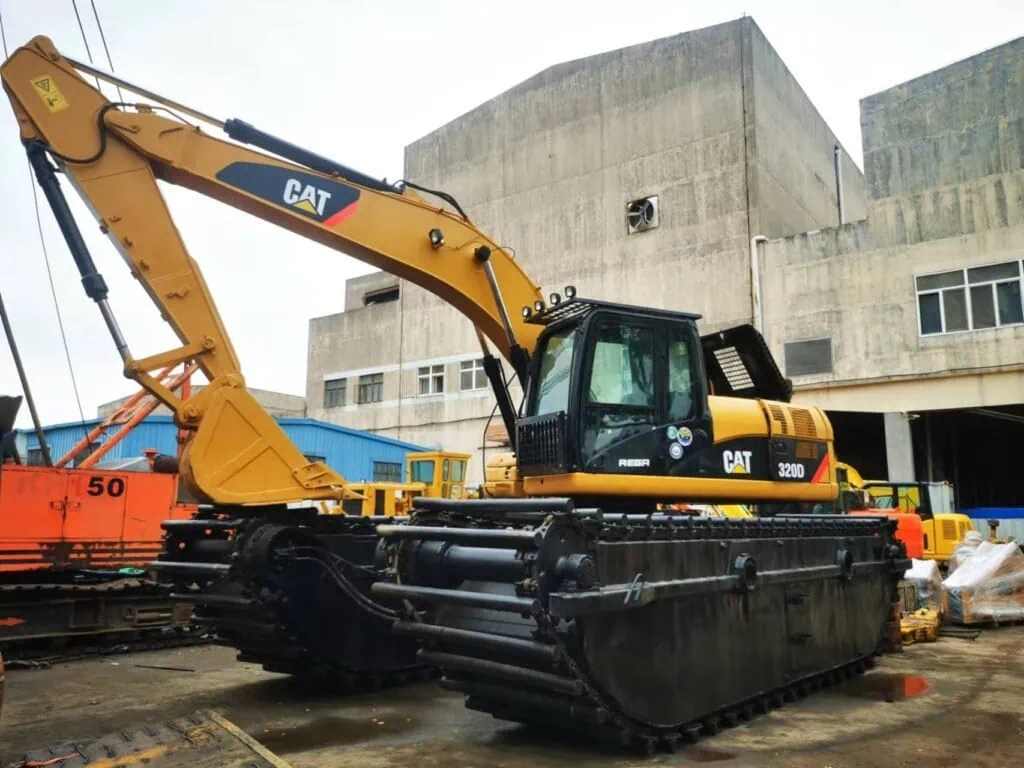
10,What Are the Environmental Considerations When Using Amphibious Excavators?
Amphibious excavators are in places like wetlands, rivers, and floodplains, where being environmentally conscious of the impact these machines have is essential. By paying attention to the environmental impact your project has, you can ensure not only is your project sustainable, but also that it is not causing harm to the wetlands, rivers, or floodplains you are working in.
Amphibious excavators can help reduce environmental damage in sensitive areas, but operators must still be mindful of the potential environmental impact. Proper use, maintenance, and adherence to local environmental regulations are key.
Amphibious excavators offer many advantages such as the ability to access and work where other machines can’t, but use them with caution when it comes to operating them in a manner that is environmentally safe. Most amphibious excavators are used to work in areas where it is very ecologically sensitive like wetlands or marshes. These habitats are the home to many different plants and wildlife, and you need to make sure that the amount of fuel the machine burns, the emission it puts out, and the wildlife they may kill become part of your environmentally friendly on-site policy.
Operating an экскаватор-амфибия comes with a fair amount of responsibility to take care of the environment they work in. Know the rules and regulations in your area because in some places it is very tightly regulated as to where and when you can use an amphibious excavator. For the operator, follow some common-sense rules like making sure not to drive it up onto the bank and leak oil all over the place. Try not to splash grease from the swing motors into the water, and don’t swing the machine out over the water and smack a tree (or anything else). Run environmentally friendly oil in the hydraulic system to reduce the overall environmental impact of your project.
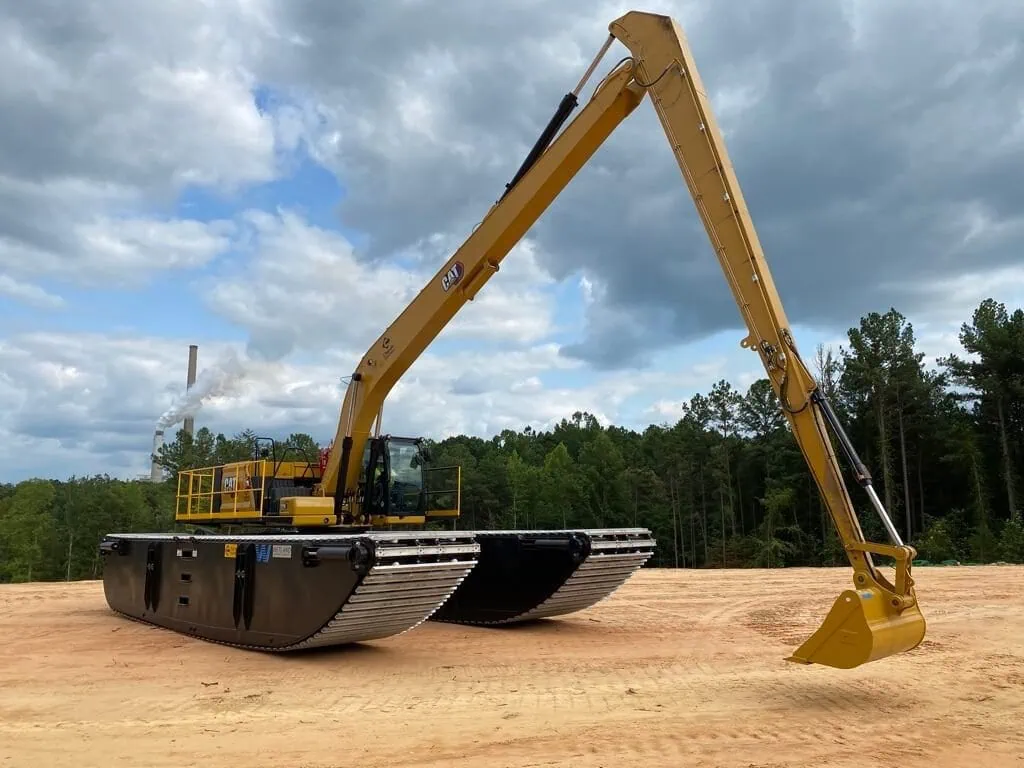
Краткое содержание
Выбор правильного экскаватор-амфибия or marsh buggie isn’t easy. It all depends on what you need to do with the machine. Make sure to verify the weight that the machine can pick up, as an underpowered marsh buggy that you want to use for a dredge won’t work. Also, you might need a powerful machine to work in and around rivers, which isn’t something you probably want for a job in a big swamp.
In the water, the depth they can dig is important. An off-the-shelf one can dig down around 14 feet, but they make a specialized one that can go down 50 feet. If you’re going to dredge anything with it, the reach of the machine is an issue. Most are made to handle jobs in shallow water. However, they make some that can reach out 30 feet, great for dredging out a port, a shoreline, or working on underwater construction projects.
When on land, make sure you can reach where you need to dig but make sure you can get to the location. You wouldn’t want to find out that you can dig where you need, but the marsh buggie you chose can’t get close enough to do the job, or the ground won’t support the equipment. Choose your equipment wisely.
Lastly, pick a good brand to do business with. Somebody like Гусеница makes a great machine that is of heavy construction and has advanced technology for harsh environments, a super swampy spot, or wet as a bull frog’s backside. Caterpillar offers some beefy machines and hydraulic systems. Komatsu is known for its fuel-efficient machines and running them all day without tons of fuel. SANY is known for its aggressive pricing, but at the end of the day, they make machines that will get the job done and done well for a whole slew of projects. Contact with us Для получения дополнительной информации сейчас!

